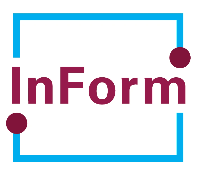
Interoperability with CPIMS+
Overview, Rationale and Purpose
Program interventions have better outcomes when they are well integrated and coordinated.
The CPIMS+ is designed to be interoperable with other information management systems. The Primero team has developed guidance for safe, secure and sustainable interoperability. The resources adhere to information sharing protocols and reinforce good practice and principles, including need to know, do no harm, and data minimization principles.
Interoperability is the ability of data systems - like Primero - to exchange information and tasks with other systems. For Primero, this may be between modules and/or with other partner systems and may involve manual exchange of files, or automation using software. Primero does not automatically exchange information with external systems, but it does have APIs (application program interface) that can act as access points to securely communicate with other systems.
Safeguarding the collection, storage and sharing of beneficiary information is central to the mission of the CPIMS+. Digital systems are increasingly used to improve services and referral mechanisms, and data security and data privacy are critical. Where systems can become electronically interoperable in order to improve the delivery of services, measures must be taken to ensure children's rights are protected. This is our commitment.
Better integration of data systems can be a driver for better outcomes for children. The CPIMS+ is here to help.
Expectations & Prerequisites
1Essential building blocks
Before we get started, there are a few building blocks that are needed to be in place to ensure a successful integration. Below is a list of key documents/processes/structures/software functionality that should be in place to proceed:
- Information Sharing Protocol (ISP) to be in place or in development in line with local Standard Operating Procedures for Case Management
- Field-level Child Protection Inter-agency coordination structures in place required to support and maintain interoperability
- Strong case management capacity and interagency collaboration
- ICT considerations including troubleshooting support are available
- Stable security situation and operational context
- API available in other IMS system receiving/sending data from Primero (this is required)
2Identify in-country agency focal points for interoperability
If your programme is interested in interoperability between Primero and another IMS, a dedicated working group is critical for coordination. The in-country CPIMS+ Users and the other IMS administrators must agree to interoperability. A dedicated system administrator for CPIMS+ must be appointed to oversee the implementation of interoperability, testing, training and on-going support. Typically this would be the CPIMS+ System Administrator or a focal point(s) with a strong understanding of information management systems and child protection who is actively involved with inter-agency child protection case workers and managers. This in-country appointed focal point(s) will be requested to meet with the Primero and other IMS team for 1 hour weekly calls for ~9 weeks for the duration of interoperability implementation and participate in a system administrator training for interoperability. The focal point(s) will support end-to-end testing of data sharing between the 2 systems, and training end-users once the system is ready to go-live. Once interoperability is live, the focal point(s) will also be the user(s) who would support with assigning referrals to the appropriate agency and troubleshoot any issues that end-users may face.
3Approved and Signed Information Sharing Protocol between participating agencies
All data sharing requests should be clearly outlined in the Data Protection Information Sharing Protocol (DPISP) which is a tool that is part of Information Management standards for case management. All child protection agencies are required to agree and sign a DPISP defining what information about children can be shared, when and with whom.
4Configuration Support
The in-country agencies will provide the technical teams from Primero and the other IMS with the following information to implement the interoperability solutions:
- Use cases when data should sent/received
- Workflows of which users and roles should send/receive data
- What data points would be shared and under which circumstances
5Budgeting
Responsibility for budgeting and financial resourcing for the interoperability solution should be agreed in advance. There are many available solutions. Reach out to your local team to explore options.
Timeline Considerations
The Primero Team offers support services to implement interoperability solutions. This must be done in close
coordination with the technical team of the partner solution.
The tasks in blue are led by the appointed inter-agency focal point.
1. Signed Data Protection and Information Sharing Protocol
2. Data flow and mapping specifications are finalized
3. Technical Implementation
Note: For any new implementation of interoperability we will replicate this technical process
4. Access is provided to test environments
5. Demonstration and testing by in-country agencies
6. System Administrator training on how to support after go-live, administer and monitor interoperability
7. Training on how to send and receive data between Primero and other IMS as well as refresher training as needed
8. Go-live with interoperability between Primero and partner IMS
Technical Documentation on Interoperability with UNHCR's ProGres v4
Technical Documentation on Interoperability with Inform

Technical Documentation for InForm on Github
Technical Considerations and FAQ
Raised by the Primero Coordination Committee & CPIMS+ Steering Committee
Consent and Assent in Interoperability between Primero’s CPIMS+ and UNHCR's proGres v4 Child Protection Module
What is the purpose of interoperability with other system(s) and what problem are you trying to solve making systems inter-operable?
How will the data shared be used by other system(s)?
What is the benefit to end users?
What is the benefit to women and girls or children?
What are the risks for the end user or children?
What are the decision-making bodies at each organization? Are representatives of these bodies included in the conversation? Is/are user organization(s) involved in the conversation?
Who (which individual(s)/role(s)) have access to Primero records shared with the other system? Can access be limited to certain individual(s) or role(s)?
Beyond actor(s) implementing the other system, do other actor(s) have access to the records shared from Primero?
Do Primero user organization(s) have the right to opt-out on the data sharing with external system?
How is consent collected from beneficiaries for data sharing with other system? Are staff trained to ask for consent specifically for data sharing with external actors? What tools exist (ie. tailored consent form)? What happens if they do not give their consent?
Is interoperability with other system(s) enshrined in the Information Sharing Protocol (ISP)? Has the ISP been developed in a collaborative and inclusive manner with User organization(s)?
How does interoperability with other system(s) affect the inter-agency process of data sharing for the purpose of monitoring and analysis of trends (ie. compilation, reporting and analysis)?
What is/are the scenario(s) in which data needs to be shared with other system(s)?
What constitutes a referral between Primero/CPIMS+ and Progresv4? For what specific service?
Which document defines what constitutes a referral? Is it global or country level?
How do we address challenges that we may encounter when discussing interoperability in specific contexts? (I.e. specific context-related risks and considerations for data sharing among UNICEF/UNHCR, INGOs/Implementing Partners and Governments)
Is development work needed to enable interoperability between systems? If so, how can it be done?
Does UNHCR have a data protection policy?
Does UNICEF have a data protection policy?
© Copyright 2024





